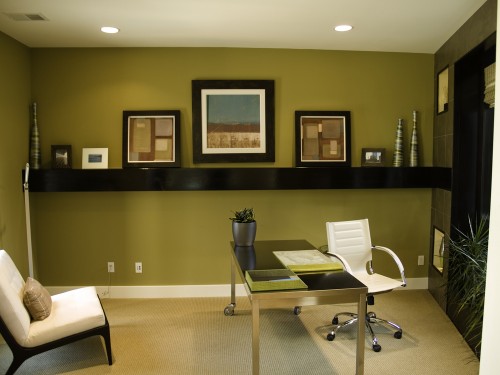By Kayla Matthews
Some may ask why is ergonomics important, but the reasons become apparent if you’ve worked in an office that doesn’t accommodate for it. Harsh lighting, excessive ambient noise and loud, multi-colored walls can all be the downfall of employee productivity.
Efficiency is king in the modern world, and many employers implement new technologies and methods to maintain it — but employee comfort isn’t always at the forefront. Reconstructing a workspace for ergonomics is simple, though, and it benefits everyone in the long run.
Learn about the core elements of ergonomics and why they’re important — then check out some ways to make your workspace more bearable. Wave goodbye to the days of lost productivity, because you’ll be back on the ball in no time.
The Basics of Ergonomics
Ergonomics studies efficiency, productivity and comfort within the workplace. It looks at what makes employees comfortable and what doesn’t, allowing employers to adjust the environment accordingly. When you think about ergonomics, you consider elements like lighting, temperature and desk positioning. All of these can make or break a workplace, taking it from a warm, friendly environment to a chilly, dimly lit dungeon.
Consider the different ways that acceptable or poor ergonomics can impact your environment:
- Lighting: Natural light is better than harsh fluorescents or dim bulbs. It reduces stress and anxiety, promotes better concentration and improves your mood. Dim lighting causes eye strain and fatigue, while fluorescent lights cause blurry vision and migraines. Natural light boosts your vitamin D levels and regulates your circadian rhythm, helping you sleep better at night.
- Temperature and humidity: You know how it feels when you’re freezing and can barely move your body — now imagine that while trying to complete office tasks. A cold workplace can impede typing, writing and verbal and mathematical tasks, which hurts efficiency even if you don’t immediately notice it. Warmer is typically better, but a hot, humid space makes workers sticky and uncomfortable. An appropriate temperature balance is crucial.
- Color: Anyone with a history in marketing knows the importance of color schemes on the human psyche. A lack of color can make employees feel like they’re in a sterile, cold environment. Red can seem angry and bold, while pink and orange are fun but distracting. Blue is the safest option for many companies due to its calming, dependable characteristics.
- Desk, chair and computer positioning: Sitting all day — especially with improper posture — can cause back and shoulder strain and fatigue. Prolonged sitting has ties to premature death and cardiovascular disease, and it doesn’t paint a pretty picture when compounded with the sedentary lifestyle many people already lead. Plus, a monitor that’s too close can headaches and myopia.
Employee Comfort and Productivity
Although every employer doesn’t plan their workplace around ergonomics, it displays its importance with efficiency rates. It’s difficult to concentrate in an office unsupportive of employee satisfaction. An open-plan office works for some, but others struggle to focus with so many distractions around. Others like a cold space, but some freeze and find it hard to accomplish tasks. Pleasing everyone is unrealistic, but your work environment should at least aim to heed the requests of the majority.
A study from the National Center for Biotechnology Information revealed that workers spend 62% of their day in a chair. This percentage alone raises concerns, but worries become greater when considering how many workers have improperly aligned chairs and desks. Your computer should ideally be 20 to 30 inches away from your eyes, and your arms and hands should be parallel to the floor. Your chair also needs to provide adequate lumbar support and a proper recline level.
A study of 388 special education teachers and teacher’s aides showed that 86% of them suffered musculoskeletal disorders resulting from their work. Caring for disabled students often involves lifting, carrying, pushing and pulling, which results in teachers sustaining similar injuries as more labor-intensive jobs.
Any job involving repetitive movement and awkward positions — such as manual labor, office jobs and nursing and doctoral professions — pose a risk for musculoskeletal disorders. This risk increases when ergonomics are ignored.
How to Implement It
If you’re unable to suggest a workplace-wide revamp, do small things within your space to make work more comfortable. Keep a small space heater if your workplace is too cold or a fan if it’s hot. Some employees keep blankets at their desks, though you may have to ask your employer first. Dress warmer by storing a sweater or cardigan in your bag.
Buy a natural light lamp if your workplace is dim or painfully bright. Position your lamp to provide enough light without causing a glare on your screen — this prevents eye strain. Ask about turning your workspace into a standing desk set-up. Some offices integrate sitting and standing desks in the same area for employees to choose their preferable work style.
Keep your desk decor sparse, and leave only the essentials within view — such as your laptop, writing utensils and paper. You’ll save time searching for documents and help your mind flow by minimizing clutter. Any decor you decide to keep should be in colors that make you feel relaxed and ready to work, such as blue or purple.
Ergonomics Provides Numerous Benefits
Employee comfort has an undeniable impact on the workplace. Workers have been making small improvements at their cubicles for decades, but it’s time for many employers to catch onto the game. Ergonomics is important in maintaining happy employees, and happy employees make for smooth operations.
About the Author: Kayla Matthews writes about communication and workplace productivity on her blog, Productivity Theory. Her work has also appeared on Talent Culture, MakeUseOf, The Muse and Fast Company.
Photo by Lee Campbell on Unsplash
